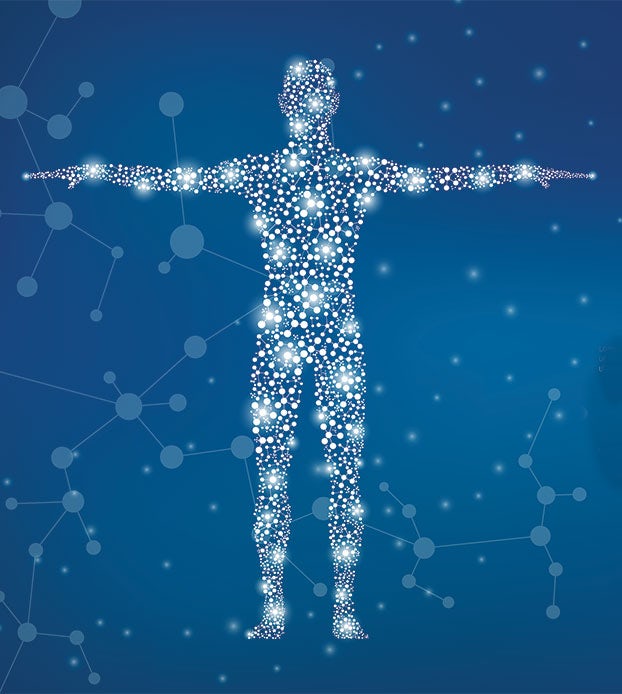This article was reviewed by Miyabe Shields PhD, a cannabinoid pharmacology expert with over 11 years research experience in the field.
If you’re familiar with endocannabinoids, it’s likely you’ve heard of the most well known one—anandamide (AEA or N-arachidonoylethanolamine). This notorious endocannabinoid has a name that means “bliss molecule” and is known for its involvement in pleasure and reward processes within the brain.
There’s another endocannabinoid that doesn’t get as much attention, but it’s equally as important as AEA and can be hundreds of times more abundant in the brain. It goes by the name of 2-arachidonoylglycerol (2-AG).1
Like most of the endocannabinoid system (ECS), the discovery of 2-AG can be traced back to Israeli scientist Dr. Raphael Mechoulam. He and his PhD student Dr. Ben-Shabat first isolated 2-AG from the intestines of canines in 19952. They also identified that 2-AG has THC-like properties in mice, thus establishing 2-AG’s place within the ECS.
Similar to anandamide, 2-AG is essential to maintaining homeostasis (balance) in the body. It does this in many complex ways, but similar to THC and anandamide, most of 2-AG’s actions are mediated through actions at the CB1 and CB2 receptors. Its abundance suggests that 2-AG is one of the most important endocannabinoids, regulating numerous important processes throughout the body. These processes include a number of important physiologic functions3 including:
- regulating hunger
- mediating inflammation
- moderating mood
- reducing pain
2-AG and food intake
Anyone who has ever experienced the munchies can attest that the ECS has a well-established role in moderating food intake. In fact, numerous animal studies have shown a significant relationship between 2-AG levels, hunger and metabolism. Researchers have found that 2-AG levels in certain parts of the brain are increased during fasting, where it is responsible for mediating the feeling of hunger and the compulsion to eat. Once fed, the 2-AG levels in parts of the brain decrease back to normal.4
It’s not hard to see how a dysregulated ECS could lead to problems with appetite and metabolism. 2-AG is an important part of a balanced ECS, and when it is pushed out of balance, there can be significant consequences. In the case of food intake, too much 2-AG could lead to excessive hunger, and too little could lead to a lack of appetite.
Some scientists speculate that 2-AG is a contributing factor to the global obesity problem. Overconsumption of omega-6 fats, like those from corn or canola oil, may be leading to an ECS imbalance for much of the modern world. Because 2-AG is made from omega-6 fats, overconsuming them may be leading to increases in appetite via the ECS, contributing to a vicious cycle of gaining weight and overeating.5 These speculations, like much of our knowledge of cannabis, are based primarily on rodent studies and have yet to be confirmed by human clinical investigations.
2-AG and nervous system inflammation
Scientists have found in recent years that diseases of the nervous system often have an inflammatory component, which means treatments may have therapeutic benefits. Cannabinoids have been shown to have anti-inflammatory properties6 and may be helpful in treating some neurodegenerative diseases. Furthermore, scientists are very interested in how the ECS, and 2-AG specifically, is involved in the development of certain neurologic diseases.
Neurodegenerative diseases like Huntington’s disease, Parkinson’s disease, and Alzheimer’s disease are very burdensome, and finding an effective treatment for these diseases is a priority for scientists. Animal models have shown that by manipulating the levels of 2-AG, by turning on or off the enzymes responsible for its production and degradation, scientists may be able to improve clinical outcomes.7
It’s true that 2-AG itself has anti-inflammatory actions within the brain, especially by interacting with CB1 and CB2 receptors. However, that isn’t the only role it plays in the inflammatory pathway. 2-AG has now been found to serve as a reserve of an important fatty acid in the body called arachidonic acid (AA). Common anti-inflammatory medications like ibuprofen(Advil), naproxen(Aleve), and acetaminophen(Tylenol) all target parts of the AA cascade.
The problem is that AA serves as the precursor for both pro-inflammatory and anti-inflammatory signaling in the body. In other words, 2-AG serves as one mediator in a complex system and its role is not one dimensional–it can be both pro-inflammatory and anti-inflammatory.8

2-AG and anxiety
Everyone experiences anxiety from time to time, but when that feeling becomes too intense or too frequent, it may become intrusive and develop into generalized anxiety disorder. It is not yet clear what exactly the role of 2-AG in anxiety is, but there is no doubt that it is involved.
Generally speaking, 2-AG appears to reduce anxiety. However, the ECS is not that simple of a system. If 2-AG levels remain elevated for an extended period of time, down-regulation of CB1 and CB2 receptors could occur, which could induce changes to baseline mood and anxiety.9 This is likely due to the CB1 receptor playing a major role in regulating anxious and depressive behaviors.
2-AG also plays a major role in mediating the stress hormone known as cortisol. When under stress, be it physical, mental or emotional stress, the body releases hormones to help protect itself. Scientists have figured out that 2-AG levels follow closely behind rising cortisol levels during times of stress.10 It’s not entirely clear why the body releases 2-AG along with cortisol, but a leading theory is that while stress signalling is important, too much of it is a bad thing. The body releases 2-AG at the same time as cortisol to help create balance, sending the signal back to the brain to turn off the cortisol.
2-AG and depression
Stress is one of the main causes of depression, and 2-AG is intimately and complexly involved with the stress response. Therefore 2-AG and depression have a relationship that is connected through the stress response. As per usual, the ECS plays a homeostatic role, helping to regulate the release of stress hormones like cortisol.11
There are numerous animal models showing abnormal 2-AG levels associated with depression. It is not yet clear if these abnormalities are the cause or symptom of the depression. In either case, animal studies have also found that numerous antidepressants can alter 2-AG levels in certain parts of the brain, suggesting that actions within ECS may be responsible for their antidepressant effects.12
Leveraging the endocannabinoid system for the treatment of depression makes sense, because the ECS has a well-established role in neuroplasticity and neurogenesis. 2-AG, through complex cellular mechanisms, can mediate the adaptability of the brain and body. In other words, the ECS helps humans respond to the world around them, helping them master a new skill, and new language, or a new movement. The nervous system is a dynamic system and the ECS helps to keep it agile and able to adjust to the changes of life. Modifying 2-AG levels could be helpful to those having difficulty adjusting to stress, thereby reducing symptoms of depression.
2-AG and addiction
Given 2-AG’s broad actions in the brain noted above and AEA’s involvement in pleasure and reward processes, it comes as little surprise that this endocannabinoid plays a critical role in mediating reward and addiction. In the case of ethanol, drinking appears to cause a release of 2-AG which eventually leads to a release of dopamine, the reward chemical in the brain. Early rodent studies suggest that in the brain, reducing the amount of 2-AG that is produced reduces alcohol consumption.13 It isn’t just alcohol, though. Endocannabinoid levels (both 2-AG and anandamide) have been found to be altered by numerous addictive substances including nicotine, THC, ethanol, and opioids.14 Modifying levels of 2-AG may be beneficial to those who struggle with substance use disorders.

2-AG and pain
Similar to anandamide, 2-AG is a pain mediator. Numerous studies manipulating 2-AG levels have shown it plays an important role in all types of pain, especially inflammatory pain. It has been shown that local administration of 2-AG causes pain-relieving effects. In all the studies that found 2-AG benefited pain, it was a diminishing effect. 2-AG plays an important role in pain signaling and pain desensitization, and it does so by interacting directly or indirectly with receptors CB1, CB2, and/or TRPV1 in numerous parts of the body.15 Through this two-fold mechanism, 2-AG is a critical regulator of both inflammatory and neuropathic pain.
2-AG vs AEA vs THC
When you look at the full name of the endocannabinoids, you can see they are quite similar: N-arachidonoylethanolamine (anandamide) VS 2-arachidonoylglycerol (2-AG).
But those small name changes correlate to significant molecular changes and different functions within the body. That’s what really sets 2-AG apart from anandamide; the actions at the receptor site in the body. You see, each endocannabinoid is a unique key that opens the lock (aka the receptor) in a specific way.
In the case of anandamide and THC, they act remarkably similar in the body and open the lock similarly—they are both known as partial agonists (activators) at CB1 and CB2 receptors. If you think of activating the receptor like turning on a light bulb, THC and AEA both act similar to a dimmer switch, where the light is only partially turned on. This is different from 2-AG, which is considered a full agonist at both of these receptors which would be the equivalent of turning the light fully on.16 This means 2-AG produces a more robust biological response than partial agonists like anandamide.
This type of agonist can be useful, but regular exposure to full agonists can increase the risk of adverse effects and can also lead to tolerance development. This difference in agonism is very important pharmacologically and is one of the biggest distinguishing factors between 2-AG and anandamide.
There are numerous other nuances between these endocannabinoids, with one of the most important being affinity. Anandamide is very strongly attracted to the CB1 receptors, whereas 2-AG is not nearly as compelled to engage with CB1. Another primary difference is general abundance in the body. 2-AG can be found at significantly higher levels than anandamide within most tissues throughout the body.
The difference in affinity means that, despite being much more abundant throughout the body, anandamide can out-compete 2-AG at the CB1 receptor site. This type of endocannabinoid competition could help to explain the complex and dynamic actions of the ECS.
If 2-AG is so important, why haven’t you heard of it? Well, it’s unclear why 2-AG has not been talked about as much about anandamide. Perhaps it’s because anandamide was discovered first. Perhaps it’s the name—2-AG can’t compete with a name like “bliss molecule.” It is also possible that because anandamide functions almost exactly like THC in the body, people feel drawn towards it. In any case, 2-AG plays a crucial role throughout the body and brain and it shouldn’t be overlooked.
How can you increase/decrease 2-AG levels?
Some food can contain 2-AG; in particular, milk may contain significant amounts.17 But chugging a bunch of milk would not be a good way to directly increase your 2-AG levels, as most of it would be broken by the body before it can be absorbed. It is also unclear how pasteurization, a mandatory process for most milk sold in stores, would affect the endocannabinoids present in milk.
Some natural products may also contain molecules that can modify endocannabinoid breakdown. In fact, there are probably numerous plant molecules that interact with the ECS without even realizing it because they haven’t been studied from this perspective.
Flavonoids like kaempferol from fruits and vegetables may be able to inhibit an enzyme in the body known as FAAH18, which could reduce breakdown of anandamide, and therefore provide a mood enhancing effect. And while not yet studied at any length, there are other plants and herbs that produce molecules that interfere with the breakdown of 2-AG, by inhibiting an enzyme known as MAGL.19
2-AG and the entourage effect
Long before cannabis was being sold in legal dispensaries, in 1999 Israeli scientists looked at how certain lipids produced in the body may help to prevent the breakdown of 2-AG. These co-produced endocannabinoid-like lipids help to protect the endocannabinoid from enzymes that would attempt to metabolize them; somewhat similar to how an entourage would surround and protect their celebrity from swarming fans. This was the original description of the entourage effect before the term was later applied to whole plant cannabis.
An interesting fact about 2-AG is that it was one of the first molecules to be associated with the “entourage effect”. Those Israli scientists, in that same paper in 1999, made one of the earliest mentions of the modern definition of entourage effect that has been ascribed to cannabis saying that plant synergy “may play a role in the widely held (but not experimentally based) view that in some cases plants are better drugs than the natural products isolated from them.”20
Sources
- Justinová Z, Yasar S, Redhi GH, Goldberg SR. The endogenous cannabinoid 2-arachidonoylglycerol is intravenously self-administered by squirrel monkeys. J Neurosci. 2011;31(19):7043-7048. doi:10.1523/JNEUROSCI.6058-10.2011
- Mechoulam R, Ben-Shabat S, Hanus L, et al. Identification of an endogenous 2-monoglyceride, present in canine gut, that binds to cannabinoid receptors. Biochem Pharmacol. 1995;50(1):83-90. doi:10.1016/0006-2952(95)00109-d
- Baggelaar MP, Maccarrone M, van der Stelt M. 2-Arachidonoylglycerol: A signaling lipid with manifold actions in the brain. Prog Lipid Res. 2018;71:1-17. doi:10.1016/j.plipres.2018.05.002
- Kirkham TC, Williams CM, Fezza F, Di Marzo V. Endocannabinoid levels in rat limbic forebrain and hypothalamus in relation to fasting, feeding and satiation: stimulation of eating by 2-arachidonoyl glycerol. Br J Pharmacol. 2002;136(4):550-557. doi:10.1038/sj.bjp.0704767
- Izzo AA, Piscitelli F, Capasso R, et al. Peripheral endocannabinoid dysregulation in obesity: relation to intestinal motility and energy processing induced by food deprivation and re-feeding. Br J Pharmacol. 2009;158(2):451-461. doi:10.1111/j.1476-5381.2009.00183.x
- Nagarkatti P, Pandey R, Rieder SA, Hegde VL, Nagarkatti M. Cannabinoids as novel anti-inflammatory drugs. Future Med Chem. 2009;1(7):1333-1349. doi:10.4155/fmc.09.93
- Baggelaar. 2-Arachidonoylglycerol. Prog Lipid Res. 2018;71:1-17
- Turcotte C, Chouinard F, Lefebvre JS, Flamand N. Regulation of inflammation by cannabinoids, the endocannabinoids 2-arachidonoyl-glycerol and arachidonoyl-ethanolamide, and their metabolites. J Leukoc Biol. 2015;97(6):1049-1070. doi:10.1189/jlb.3RU0115-021R
- Imperatore R, Morello G, Luongo L, et al. Genetic deletion of monoacylglycerol lipase leads to impaired cannabinoid receptor CB₁R signaling and anxiety-like behavior. J Neurochem. 2015;135(4):799-813. doi:10.1111/jnc.13267
- Baggelaar. 2-Arachidonoylglycerol. Prog Lipid Res. 2018;71:1-17
- Silveira KM, Wegener G, Joca SRL. Targeting 2-arachidonoylglycerol signalling in the neurobiology and treatment of depression. Basic Clin Pharmacol Toxicol. 2021;129(1):3-14. doi:10.1111/bcpt.13595
- Baggelaar. 2-Arachidonoylglycerol. Prog Lipid Res. 2018;71:1-17
- Winters ND, Bedse G, Astafyev AA, et al. Targeting diacylglycerol lipase reduces alcohol consumption in preclinical models [published online ahead of print, 2021 Jul 22]. J Clin Invest. 2021;146861. doi:10.1172/JCI146861
- Serrano A, Parsons LH. Endocannabinoid influence in drug reinforcement, dependence and addiction-related behaviors. Pharmacol Ther. 2011;132(3):215-241. doi:10.1016/j.pharmthera.2011.06.005
- Baggelaar. 2-Arachidonoylglycerol. Prog Lipid Res. 2018;71:1-17
- Ueda N, Tsuboi K. Discrimination between Two Endocannabinoids. Chemistry & Biology. 2012;19(5):545-547. doi:10.1016/j.chembiol.2012.05.001
- Di Marzo V, Sepe N, De Petrocellis L, et al. Trick or treat from food endocannabinoids?. Nature. 1998;396(6712):636-637. doi:10.1038/25267
- Thors L, Belghiti M, Fowler CJ. Inhibition of fatty acid amide hydrolase by kaempferol and related naturally occurring flavonoids. Br J Pharmacol. 2008;155(2):244-252. doi:10.1038/bjp.2008.237
- Yang, R., Lu, Y., & Liu, J. (2014). Identification of tanshinone IIA as a natural monoacylglycerol lipase inhibitor by combined in silico and in vitro approach. MedChemComm, 5(10), 1528–1532.
- Mechoulam R, Ben-Shabat S. From gan-zi-gun-nu to anandamide and 2-arachidonoylglycerol: the ongoing story of cannabis. Nat Prod Rep. 1999;16(2):131-143. doi:10.1039/a703973e
Sign up for bi-weekly updates, packed full of cannabis education, recipes, and tips. Your inbox will love it.

 Shop
Shop Support
Support















